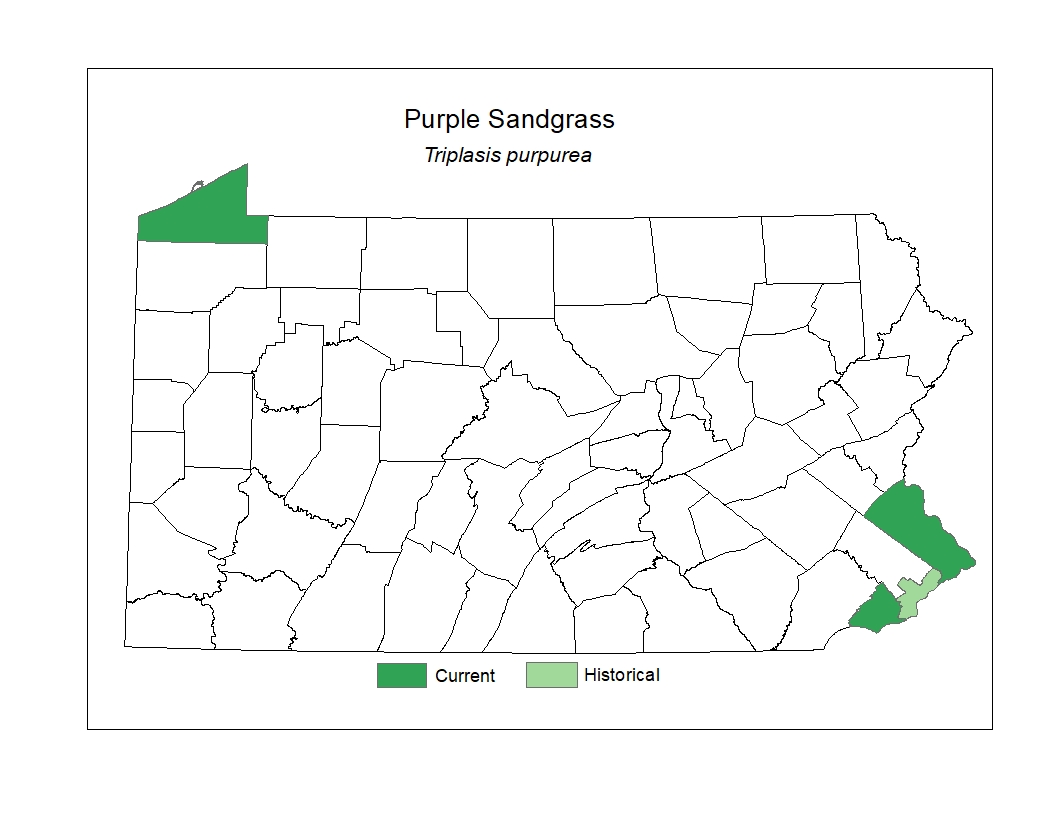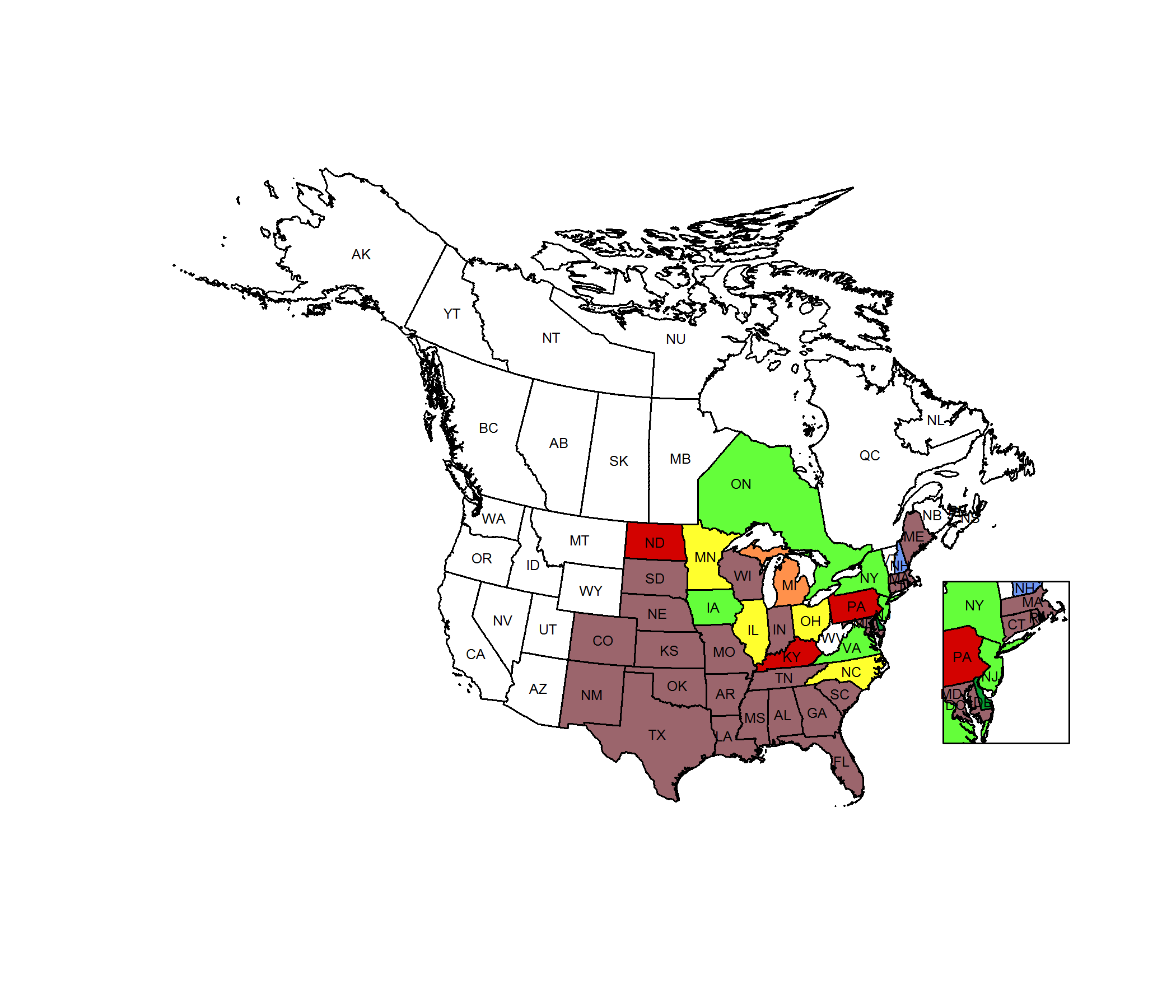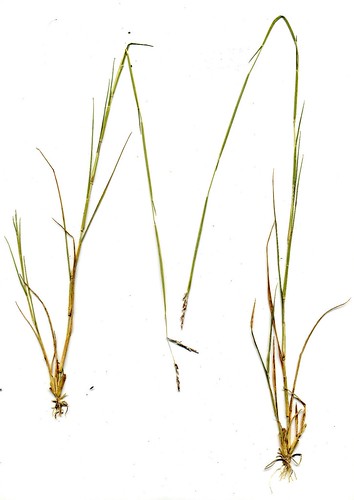 Species Factsheets
Species Factsheets
Triplasis purpurea
Purple Sandgrass
State Status: Pennsylvania Endangered (PE)
PBS Status: Pennsylvania Endangered (PE)
Federal Status:
Global Rank: G4G5
![]() rank interpretation
rank interpretation
State Rank: S1
Description
Purple Sandgrass is an annual grass that may grow to 60 cm in height, but is usually much shorter and in some situations may be prostrate on the ground. The small swellings, or nodes, on the stem often have a tuft of hairs, or "beard." The leaves are alternately arranged, consisting of a basal sheath portion that envelopes the stem and is often hairy or rough to the touch, and a linear or lance shaped, flattened, and untoothed blade that is 1- 7.5 cm in length and about 1-5 mm in width, often hairy or rough to the touch, and pointed at the tip. The leaf blades often get shorter in length upward on the stem, and may become inrolled, making them appear narrower than they really are. The flowers, appearing in August and September, occur in a branched inflorescence (although some inflorescences may be partially hidden in the leaf sheaths) containing many individual spikelets, about 5-8 mm in length and often with a purplish cast, each of which contains 2-5 individual flowers. The main scale, or lemma, which subtends an individual flower, has 3 prominent and hairy veins.
Rank Justification
Critically imperiled in the nation or state because of extreme rarity (often 5 or fewer occurrences) or because of some factor(s) such as very steep declines making it especially vulnerable to extirpation from the state.
Habitat
It grows in open, sandy places, such as beaches, dunes, and shores.
Survey Dates
Flowers August - September
Distribution
Purple Sandgrass ranges from Maine to North Dakota and south into Florida and New Mexico. In Pennsylvania, it has been documented historically in the northwestern and southeastern counties.

Management
The viability of populations of Purple Sandgrass may require active management in order to maintain early successional conditions and to control invasive species.
Conservation Status Map


NatureServe. 2017. NatureServe Explorer: An online encyclopedia of life [web application]. Version 7.1. NatureServe, Arlington, Virginia. Available https://explorer.natureserve.org.
- NatureServe. 2018. NatureServe Explorer: An online encyclopedia of life [web application]. Version 7.1. NatureServe, Arlington, Virginia. Available at https://www.natureserve.org/explorer
- Pennsylvania Natural Heritage Program. 2018.
- Rhoads, A.F. and W.M. Klein, Jr. 1993. The Vascular Flora of Pennsylvania. American Philosophical Society, Philadelphia, Pennsylvania. Rhoads, A.F. and T.A. Block.
- 2007. The Plants of Pennsylvania: An Illustrated Manual. 2nd edition. University of Pennsylvania Press, Philadelphia, Pennsylvania.







